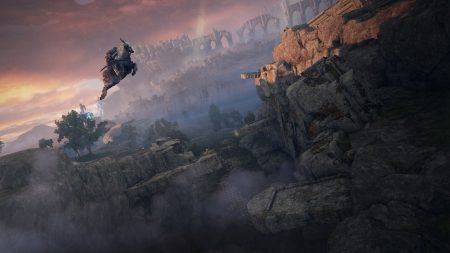It’s been a month and a half since Elden Ring Nightreign, the multiplayer roguelike spinoff of 2022’s Elden Ring, was released.
We’re now entering a bit of a lull for Elden Ring Nightreign’s post-launch content. The weeks following its release brought with it a flurry of changes: six patches, including one that immediately addressed the difficulty of solo play (one of the game’s main drawbacks), as well as three rounds of upgraded “Everdark Sovereign” versions of three bosses (the Gaping Jaw, Darkdrift Knight, and Sentient Pest). But for the next month, no new or remixed is dropping, and the current trio of enhanced bosses will be rotating in pairs for the next three weeks. This gave me the time to reflect on my time with Nightreign — the entire journey, from release to now.
The game that reviewers got to play is completely different from the one that I’m playing right now.
For context, I’ve clocked in 150+ expeditions in Nightreign. I hit up friends on Discord some evenings to get in the occasional coordinated run, but I mostly queue up with a pair of randoms during my lunch break. I’ve cleared all of the story content, beaten every boss multiple times, bought every cosmetic in the game, and done a few solo runs. I say this not to brag, but just to set a baseline: I’m a relatively unskilled, but consistent and dedicated Nightreign enjoyer who mainly hangs out in solo queue.
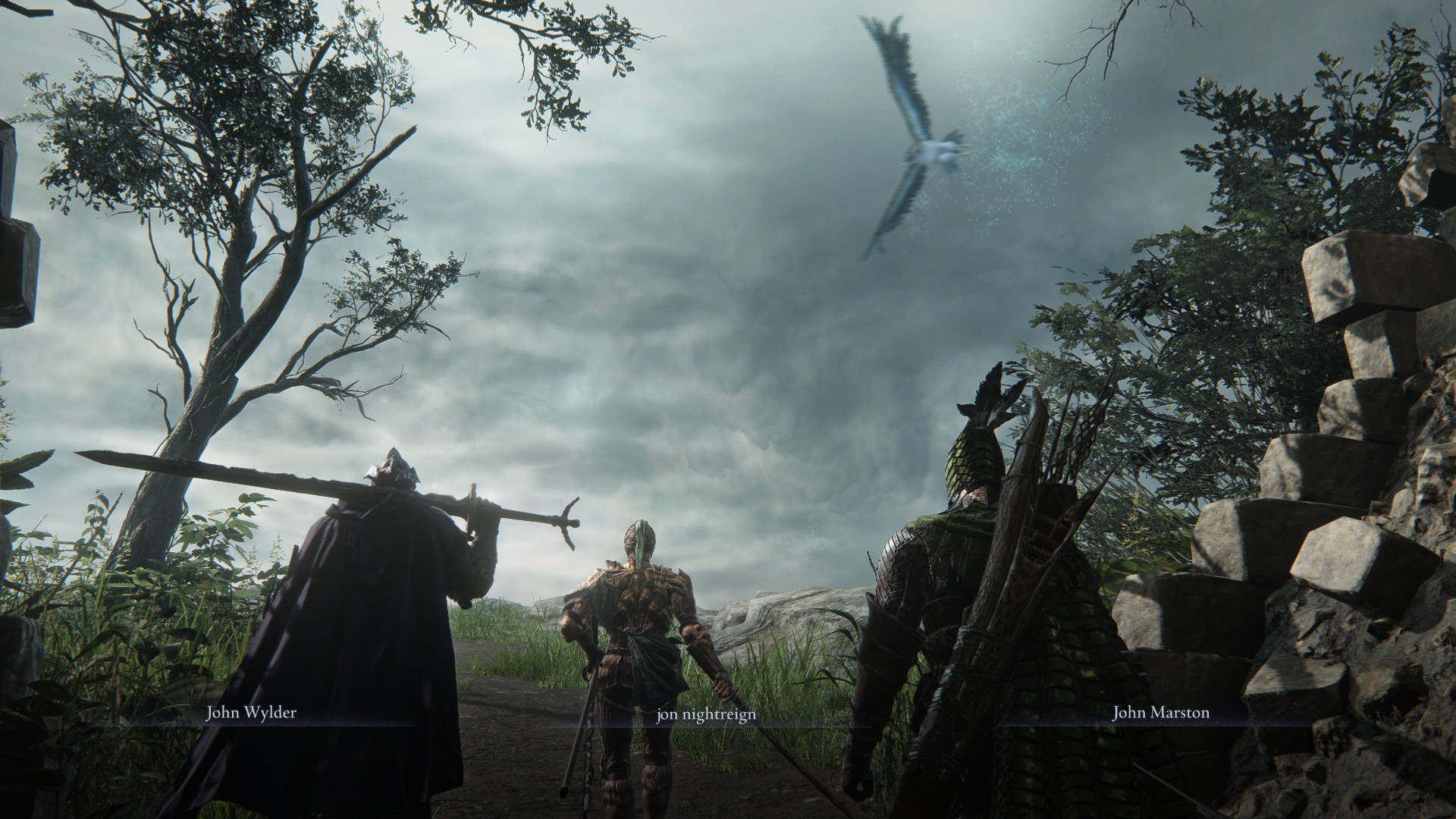
My thoughts, in brief? It’s a fantastic multiplayer experience that, like anything worth doing, requires some investment and application to fully enjoy. But more than just that, one of the aspects I’ve found myself most enjoying about Elden Ring Nightreign is the slow learning process that has come with it, a learning process not just for myself, but the community at large. It’s fun to be part of a group learning process and to capture “the meta.” But I’ve also found myself realizing something — the game that reviewers got to play is completely different from the one that I’m playing right now. Is it even possible for timely reviews to capture this phenomenon?
What Is “the Meta,” Even?
The meta, in this context, is shorthand for metagame, which Wikipedia defines as one of two concepts: “a game which revolves around a core game; or the strategies and approaches to playing a game.” I’ll be talking about the latter here.
In retrospect, one of the striking things about Elden Ring Nightreign is how different the play experience feels from hour five to hour 20, from hour 20 to 50, 50 to 100, etc. Five hours in, my friends and I were battling with zero flasks, desperately attempting three-bar revives and barely clearing Adel at level 10. At hour 20, I was desperately trying to find the second and third Royal Army Knight to clear an enemy encampment as the final circle inched toward me at the close of Day Two.
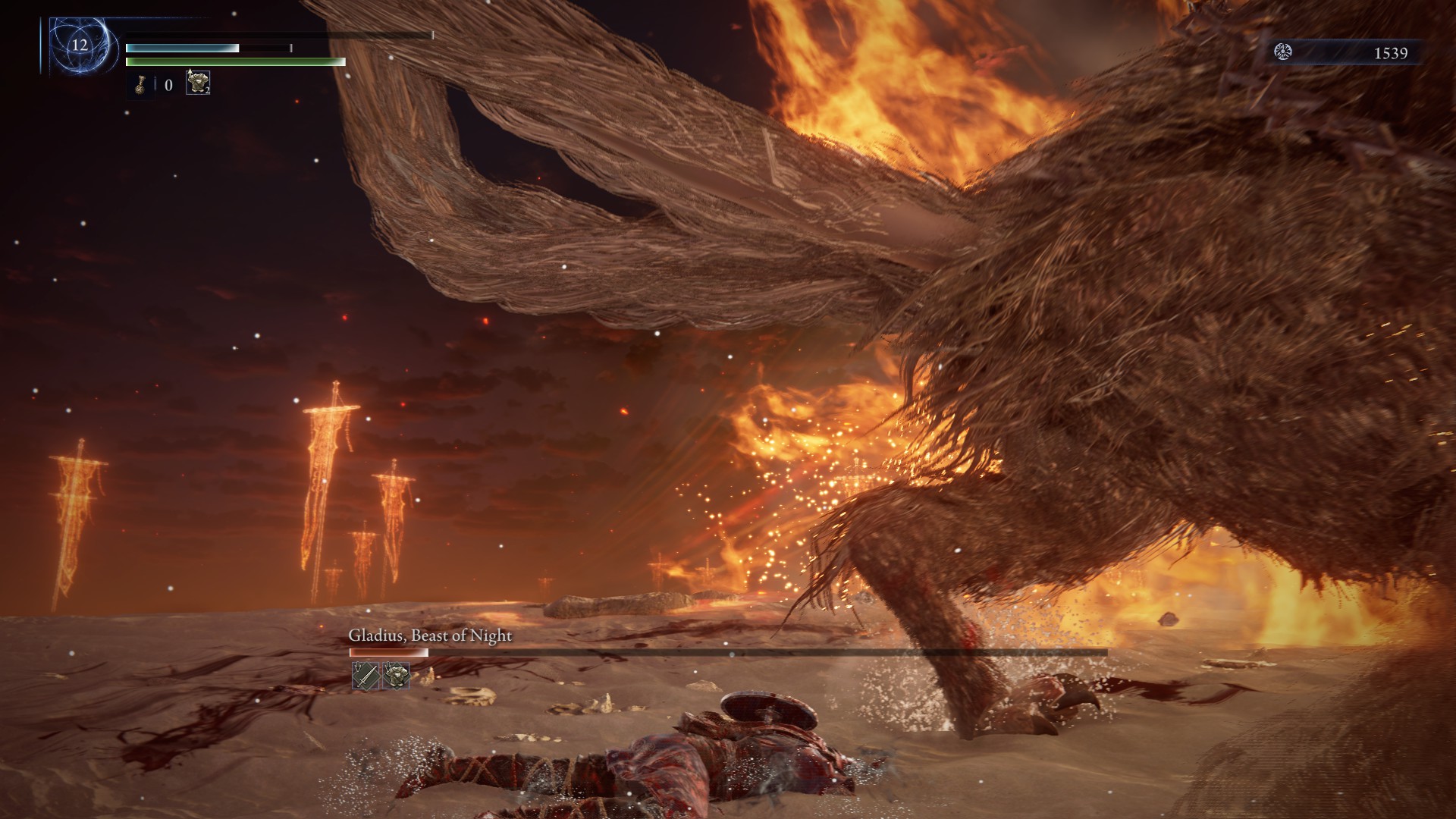
But at hour 40, even among randoms, patterns were developing. In 90% of my games, someone would drop a ping on the closest fort or church, followed by two pings also on the same location. No longer would we drop in and skip that first enemy encampment with no boss: We all understood the critical importance of hitting the 4,000 rune threshold to hit level 2 at that first site of grace before rushing off to our marker.
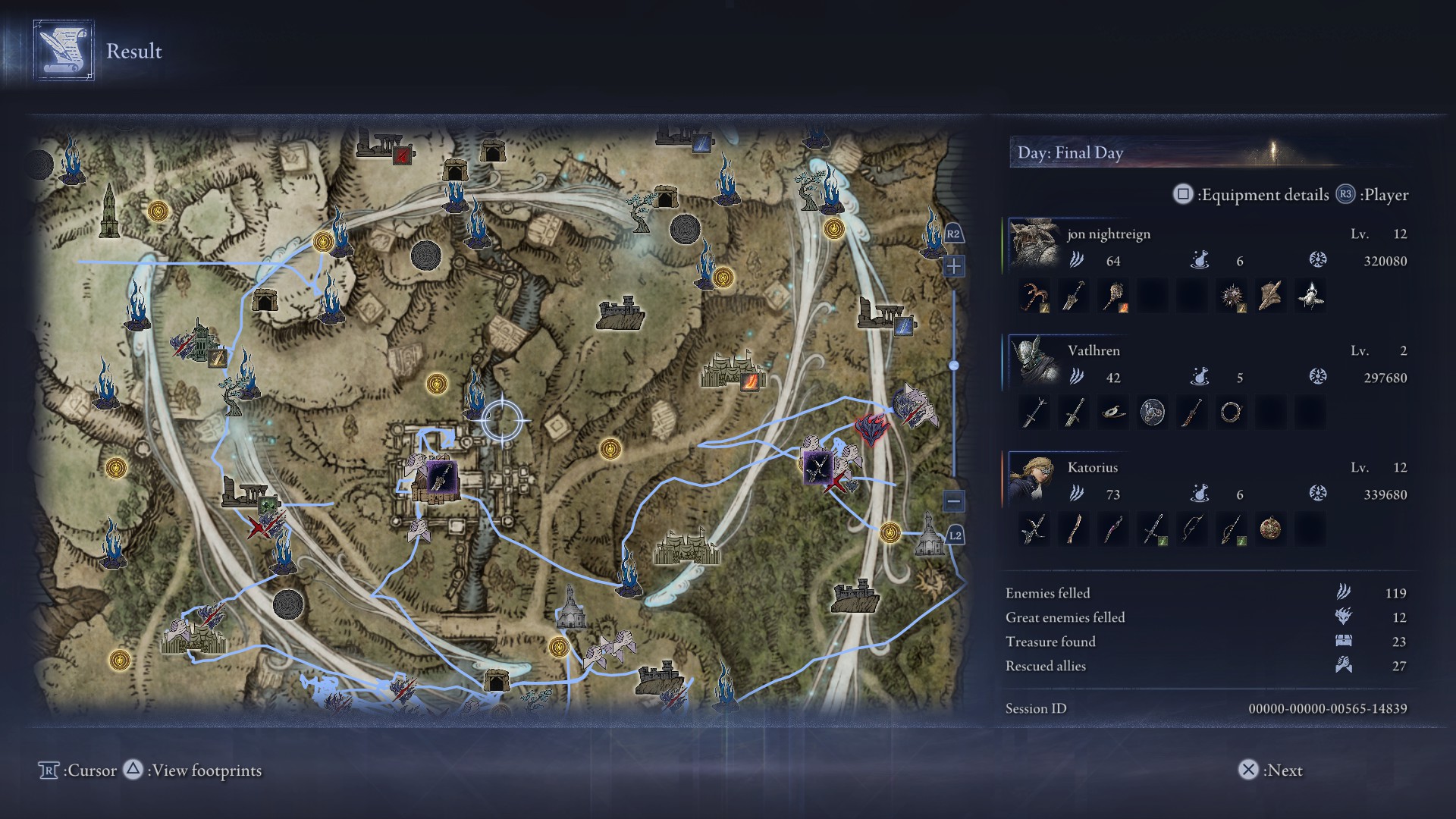
By hour 60, the “castle” meta was established: a general gameplan that involved hitting churches, forts, and Evergaols to reach level five before beelining it to the central castle structure at the initial tightening of the circle on Day One. Crucible Knights are ideal, and Banished Knights acceptable — pot-throwing Trolls are a no-go, meaning we bail for other sources of runes. Hour 80? Peak Evergaol meta, owing to the guaranteed drop of the Grand Luminous Scene relic that grants a Stonesword Key in your starting gear and a 5% boost to damage output for every Evergaol you clear. When I started, we were lucky to end a run at level 12; now, hitting max level is a common occurrence.
These might sound very specific, but they’re all self-apparent maxims that only become obvious after dozens of runs. Certainly, a tightly edited YouTube video could dispense this information, too, but any player with a sense of observation will start to see the various efficiencies and inefficiencies presented by Nightreign’s pseudo-randomized map. Some landmarks have two or three bosses instead of just one, which generally takes more time; field bosses drop actual good weapons compared to ruins or forts, and other learnings slowly crystallize into your play.
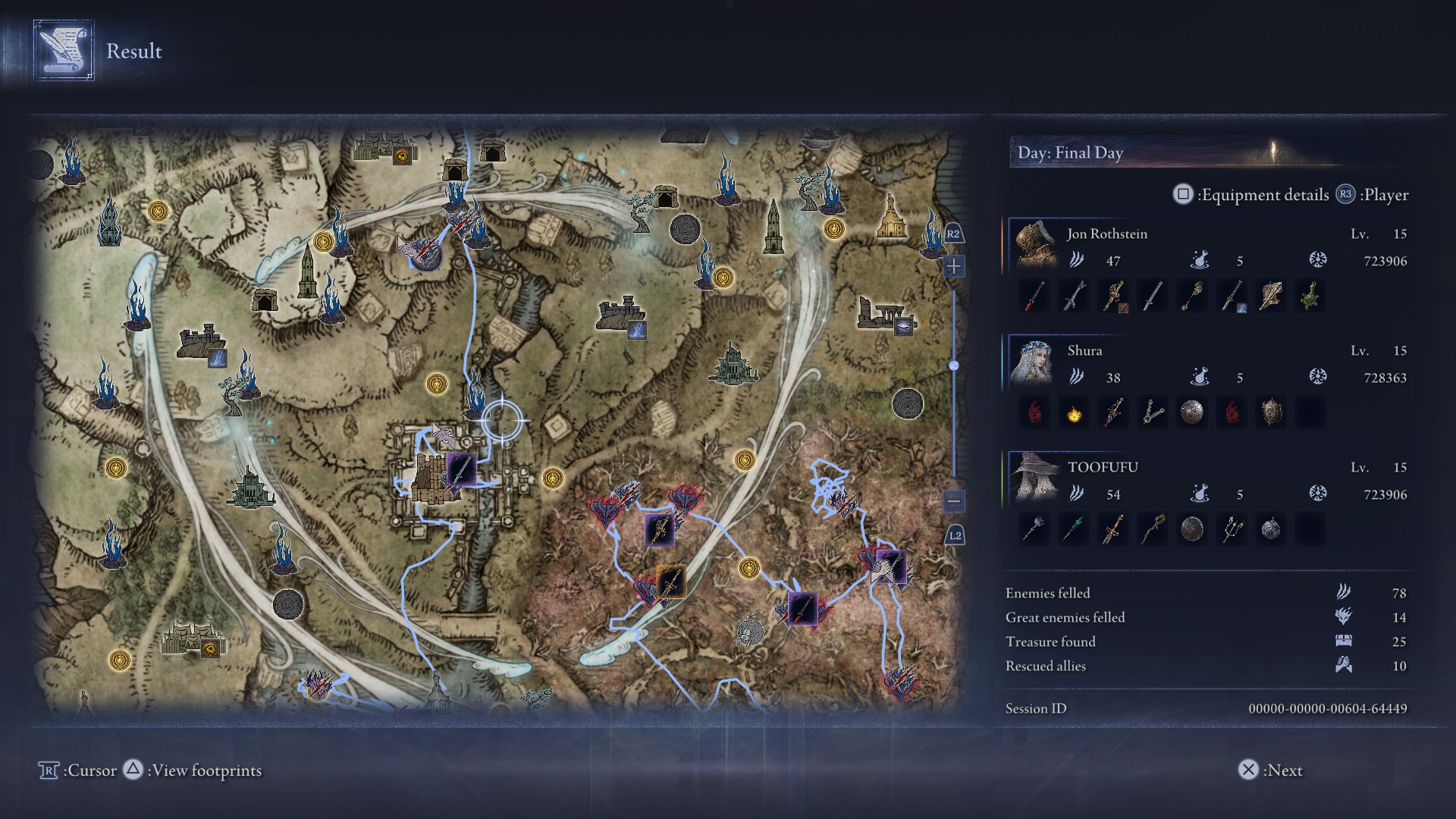
This gradual increase in expertise and learning has been one of my favorite parts of playing Nightreign. Maybe it’s because I’ve just been out of the PvP game for too long — I haven’t grinded in real lobbies for a decade now — but it’s been a fresh experience to see my knowledge and skill evolve in real-time as runs become more and more honed with each attempt.
More than seeing improvement in myself, though, it’s been a joy to see this information spread globally. It’s not just that I’m getting slightly better, it’s that everyone is. And I don’t mean solely in terms of button-pressing skill, but knowledge: knowing where to go, what to prioritize, when to bail, how to communicate. My most coordinated runs with my friends on voice chat in the first 20 hours of the game are much, much worse than my recent runs with complete randoms — a shocking evolution that I never would have expected at the outset.
The lack of voice chat was often described as a disappointment in initial user and critic reception, but now I can’t imagine Nightreign’s solo queue would be better off with it (at least natively). While it’s great fun to do a highly coordinated expedition with buddies, being able to communicate with randoms via the simplistic ping system is a joy in and of itself. Something about a fully shared but also totally nonverbal world is fascinating.
There’s something heartwarming — and sharply hilarious — about running to the castle basement, seeing the Bell Bearing Hunter, and having all three of us pivot away immediately in fear (for those not in the know, the Bell Bearing Hunter is the most dangerous field boss in the game by a large margin, for a variety of reasons, and has become a meme of his own in the world of Nightreign). I smile to myself anytime I can run the shortcut to the top of the castle as my teammates join me, or when I ping the Spiritspring jump in the valley on the castle underside as a sign to hit the Crucible Knights in the castle instead of running to the basement boss first.
These days, it’s not uncommon for players to drop consumables and appropriate weapons to their better-suited teammates prior to the final battle with no prompting at all. As the expeditions have gone by, communication and overall decision-making among randoms have only gotten better, which feels truly rewarding. It feels great to be part of a group discovery experience — to find, discover, and optimize together.
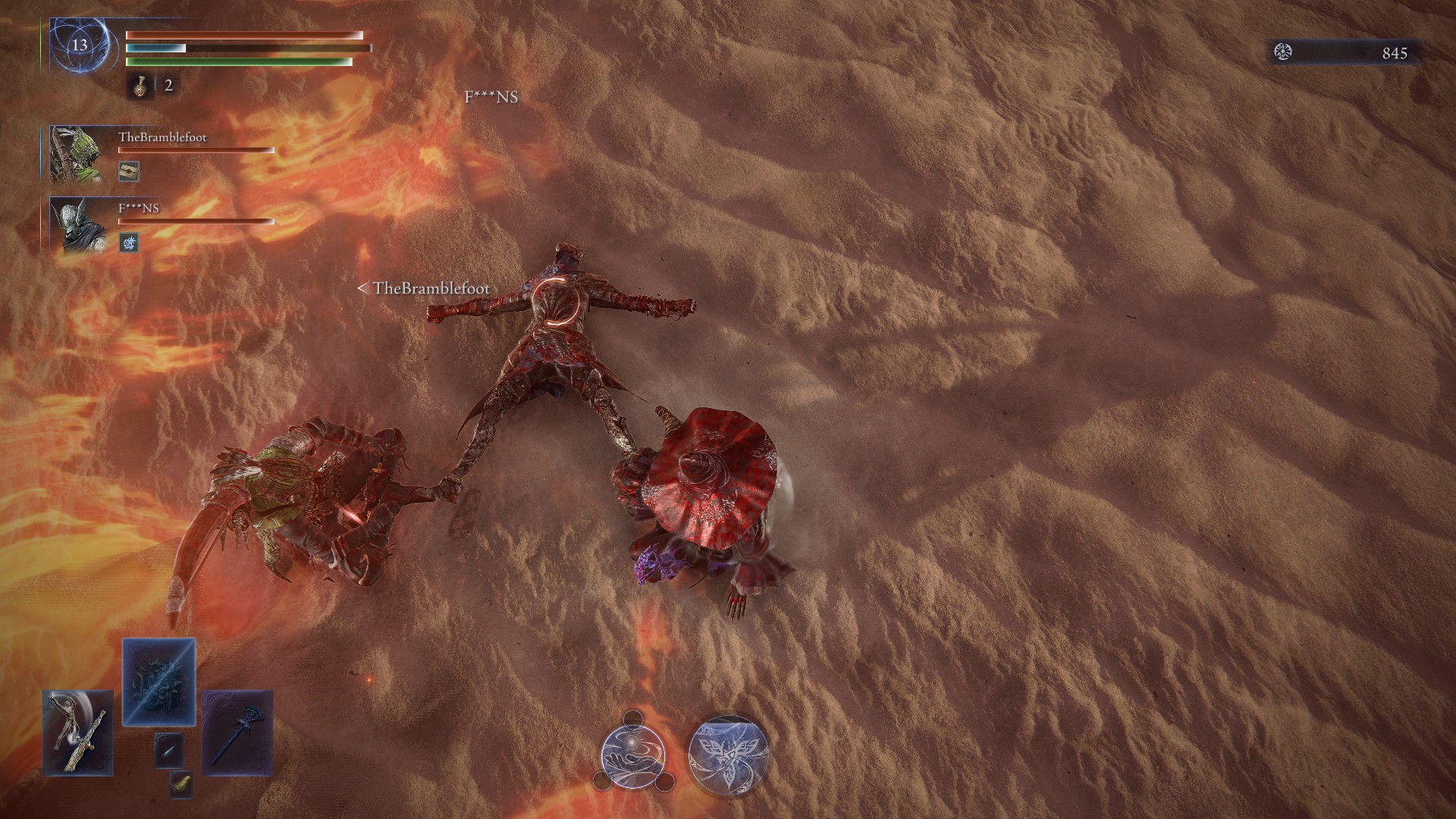
“Generally Favorable”
It’s been roughly a month and a half since reviews for Elden Ring Nightreign dropped (Metacritic and OpenCritic have Nightreign clocking in at 77 and 81, respectively — “Generally favorable” or “Strong,” using their own descriptors). Good scores overall, but nowhere near the mountaintop reached by its namesake.
Reflecting on those scores, I can’t help but ask myself: Is the Nightreign I’m playing the same one that reviewers were? In some sense, the answer is obviously no. The very first post-release patch addressed one of the most common points of concern many reviewers brought up, which was the unbalanced nature of solo play. Other bugfixes have been applied since, and new content has also been added. But it’s not just the disc, the files, and the code that have changed. It’s the player base, always evolving and growing, that has also irrevocably altered the experience.
Most players did not play Nightreign the way reviewers did: in a 30-50 hour sprint within a closed circle of participants. I imagine most people playing Nightreign have done so in the same way I did: one or two runs a day, while also being exposed to some level of external Nightreign content (YouTube tutorials, TikTok posts, Twitter memes, and Reddit threads).

Not that there is a right way or a wrong way to play any game, but the slow and steady experience provides for a smoother, more natural learning curve; the dissemination of information when millions of people have access to the game instead of hundreds is vastly more efficient. I simply don’t believe that the closed group of reviewers had an understanding of good routing, loadouts, or strategies. Moreover, I don’t think that the variety of castle shortcuts or field boss locations had been memorized, or could have been. These are all elements that I feel are core to enjoying Nightreign: a growing, localized knowledge bank that contributes to efficient clears that can be shared even among anonymous, randomized teammates limited to the most basic ping system imaginable.
Most players did not play Nightreign the way reviewers did: in a 30-50 hour sprint within a closed circle of participants.
I went back and read some reviews of Nightreign from the release window, and I don’t think any feeling or opinion shared by reviewers was invalid or inaccurate. If anything, given the time and the environment in which they played the game, their critiques were totally valid! But the pressures of the early access review space compared to the more open, consistent play pattern most players likely enjoyed simply produces different feelings and outcomes.
Many reviewers (not targeting any specific individuals in particular) wrote about how Nightreign’s time-pressured environment caused notable feelings of anxiety and stress compared to the original Elden Ring’s open-world adventure, which allowed players to explore at their own pace. This pressure was real in the opening hours of my experience, but faded as the overall skill level of the player base improved; after a dozen hours, these frustrations tended to appear less and less often.
It’s also worth noting that despite Nightreign feeling like a fort, night-esque experience, the circle closes at very regular intervals, meaning you spend the vast majority of your time with a stable circle, knowing you are safe from the rain. In the early days of Nightreign, players were extremely averse to leaving the circle and venturing into the damaging rain; now, players will regularly venture outside of the circle for key objectives like flasks or quick bosses. At first, the rain of fire feels like a severe, impending doom, but after dozens of hours of experimentation, it’s just another obstacle to manage, among several plates you have to juggle on a given expedition.
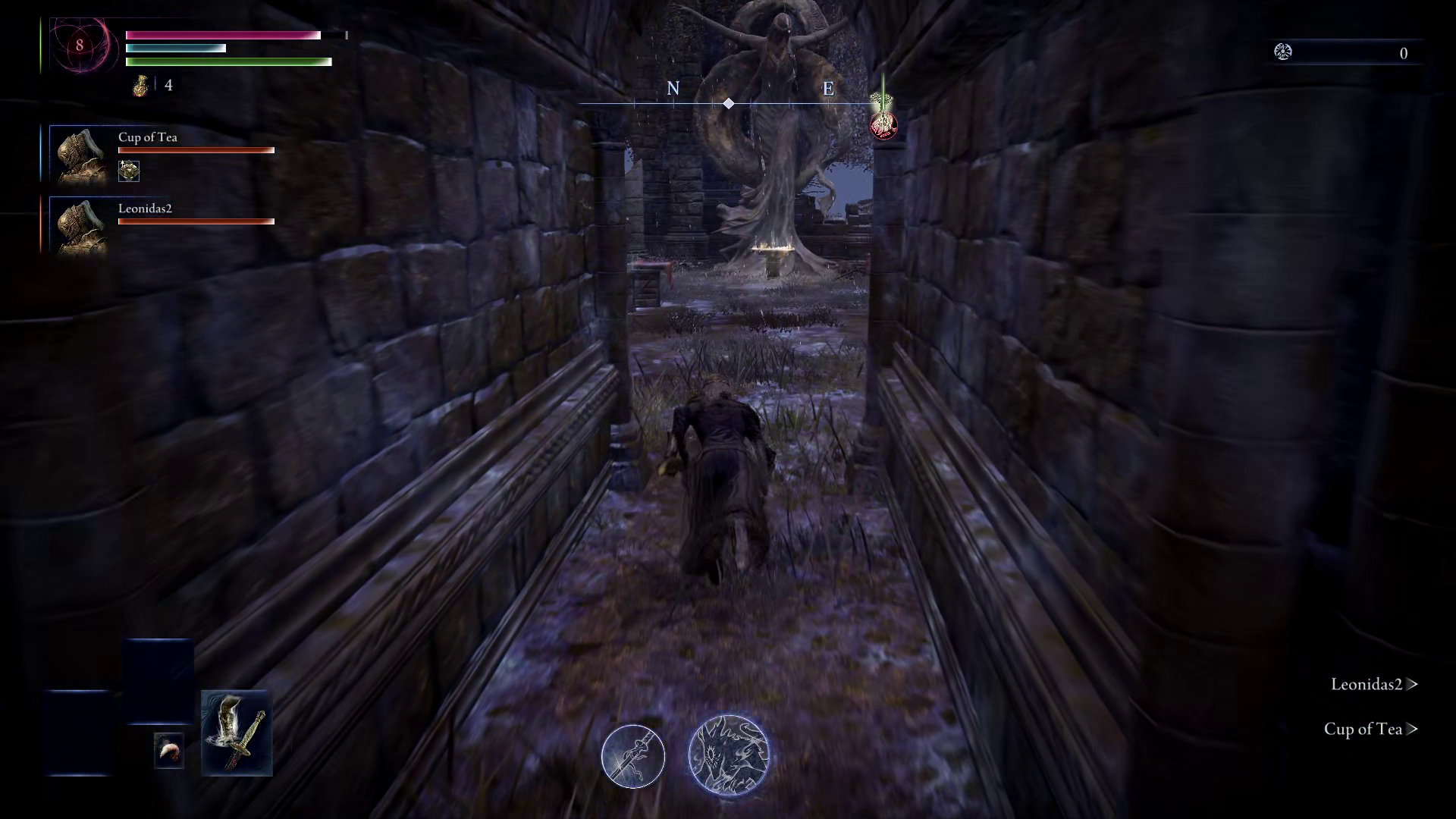
Final Thoughts
My point isn’t to call out the video game review ecosystem as a whole — the point is that it’s an impossible task to ask anyone to review a game in an environment that is going to differ so notably from the way the average consumer will play it. Crunching a 40-hour solo RPG in two weeks and playing one hour of that same single-player game a day for two months is not a similar timescale, but the experience will largely be unchanged sans massive content updates; the same cannot be said for an online, PvE experience held together by the player base and its shared knowledge. Even someone who is extremely well-versed in Souls-likes, like Iron Pineapple, who queued often with fellow like-minded players in the review window, couldn’t accurately diagnose what the experience would become with a more experienced player base (although his criticism that the character-specific relics overrode all the randomized ones wasn’t completely off, it also wasn’t completely right either).
It’s not just the disc, the files, and the code that have changed. It’s the player base, always evolving and growing, that has also irrevocably altered the experience.
Is there any way to rectify this? In the current information landscape, probably not; there’s no way that a post hoc month-after review is a viable piece numbers-wise for any of the major publications, though I can certainly see such content working in the individual YouTube creator sphere.
My main takeaway has been, if anything, that games that revolve around online, collaborative group play cannot be accurately captured in a limited window with players (reviewers) whose play patterns likely differ significantly from the average actual player. Does that mean such reviews have no value or meaning? I won’t go that far — the concept of game feel, for example, is going to be the same, no matter how skilled your teammates are. Does the lack of crossplay still suck? Yeah. Is the targeting still occasionally erratic and wonky? Absolutely. Is the relic system as fleshed out as the other comparable systems in other roguelikes? No, and that’s additionally obfuscated by numerous vague descriptions and even outright incorrect translations. Clearly, some underlying descriptors that reviewers felt still ring true now.
But it does leave me to wonder: How can you describe the zeitgeist of a game if you have to capture it before it even hits?
Huge video game, comic book, and anime fan. Spends way too much time watching things he doesn’t like. Hates Zack Snyder. Mains Falco.








